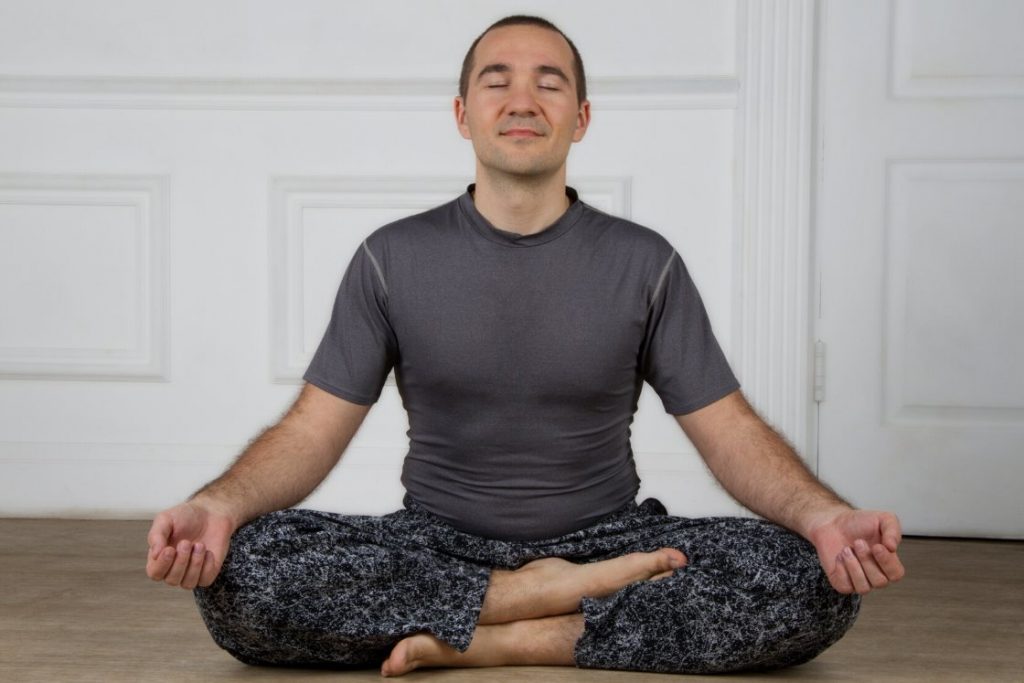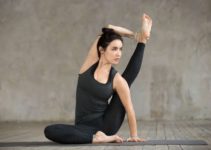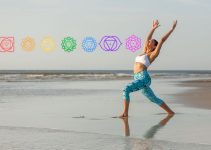
| Sanskrit Pronunciation | Sid-Hahs-uh-nuh (Siddhasna) |
| Also Known As | Accomplished Pose, Perfect Pose, Adept Pose |
| Beneficial In | Tight hip muscles, prostate problem |
| Pose Type | Seated meditative intermediate pose |
Siddhasana the second most considering asana for practicing meditation, just after the Padmasana. It gives similar benefits as Padmasana, though siddhasana is much easier to practice and maintain.
In Hatha Yoga Pradipika, Siddhasana along with padmasana, simhasana, and bhadrasana has called 4 important asanas as it improves the posture of the body to sit comfortably in meditation.
Siddhasana Meaning
In Siddhasana, the word Siddha means ‘Adept’. An adept yogi who has gained spiritual enlightenment and supernatural powers through meditation in the path of yoga is called Siddha. Siddhis are called the powers of a Siddha that actually lies in our body but due to our ignorance, we can’t explore it fully.
Siddhasana is called accomplished pose in the sense of achieving that perfection where you become a Siddha, Adept yogi. In Siddhasana
Practice Guide
To begin Siddhasana practice, follow the guide below.
Siddhasana Precautions & Contraindications
- Avoid sitting in this pose if you have injuries in the spine, hips, knees, and ankle, etc.
- This seated pose may compress your joints and cause inflammation so better to avoid it in arthritis.
- Do not practice this asana in sacral infection & sciatica pain as it hinders the flow of blood to the sciatic nerve & might worsen the condition.
Preparatory Poses
- Staff Pose (Dandasana)
- Easy Pose (Sukhasana)
- Cradle Pose (Hindolasana)
- Gracious Pose (Bhadrasana)
- Half Accomplished Pose (Ardha Siddhasana)
Siddhasana Steps
Step 1 – Extend legs straight in Dandasana & bend the left leg
- Sit in Dandasana with your legs outstretched in front of your torso. Bend your left knee and slide your left heel under your perineum (the area between your anus and genitals).
Step 2 – Bend right leg over left leg & press pubis with right heel
Then bend your right knee and place right ankle just above the left ankle. Slide your right foot so that your right heel presses pubis (just above the genital area).
Step 3 – Tuck right toes in between left thigh & calf and sit up tall
To keep your posture steady, tuck the toes of your right foot into between your left thigh and calf.
Keep in mind your knees are touching the floor and if not then use the modified pose. Press your tailbone firmly into the floor and pull the crown of your head towards the ceiling. Lengthen your spine and keep it neutral along with your neck.
Step 4 – Acquire Mudra to deepen practice
In the traditional version of Siddhasana, yogis used to fix their gaze in between eyes in Shambhavi Mudra for meditation.
With hands, either acquire simple Gyan Mudra or place hands in Namaste at heart center.
Step 5 – Release
You can hold the pose for as long as possible or can do pranayama, dhyana, or Japa for miraculous benefits.
Release the pose by slowly straightening the bend right leg in front of you then left leg in the same manner. Once you’re in complete staff pose, stand up slowly, and then you begin other practice.
Props & Modification
- If your tight hips do not allow you to sit comfortably then place a folded blanket under your sitting bones. Make sure the hips should be higher than your knees.
- Make sure while sitting in this posture, your knees should touch the floor otherwise place a blanket or cushion underneath your knees.
- If you have curved back then sit with your back resting against a wall. Here you have another option too, you can just place a block between the wall and your scapula.
- You can easily sit in Sukhasana or Comfortable pose even if your hips are not flexible enough.
Follow-Up Poses
- Janu Sirsasana (Head-To-Knee Pose)
- Parivrtta Janu Sirsasana (Revolved Head-To-Knee Pose)
- Ardha Matsyendrasana (Half Fish Pose)
Siddhasana Variations
- You can practice Jalandhar Bandha or chin lock by bringing your chin close to the center of the collarbone and gazing at the center of your eyebrows or Bhrumadhya Drishti.
- While in this seated pose, raise your hands together to the chest level and palms facing each other known as Kshemasana.
- Muktasana (librated pose) and Guptasana (secret pose) are other variations of Siddhasana in which leg and feet location varies.
- Siddha Yoni Asana – According to Hatha Yoga Pradipika, this variation of Siddhasana is recommended for female yogis. In this, the left heel is pressed into the opening of the vagina and the upper heel rests against the clitoris.
Ardha Siddhasana
When hips joint isn’t fully open, it becomes hard to maintain Siddhasana in right way. For the persons with such problem, Ardha Siddhasana (half perfect pose) can be done.
For Ardha Siddhasana, arrange left foot in the same way as described above and then place right foot on the floor just in front of left feet, instead of above it.
One leg in Siddhasana takes over another, in the same way, as in lotus pose but in lotus pose, both ankles are cross-legged. Indeed this is the reason siddhasana is also called Ardha padmasana (half lotus pose).
Siddhasana Benefits
The yogi practicing contemplation upon Atman and observing a
Light on Yoga, BKS Iyengar
moderate diet, if he practices Siddhasana for twelve years, obtains the
yoga siddhis.
- Siddhasana purifies all 72,000 nadis by the pressing action of the heel against the perineum (the place of Muladhara chakra and three main nadis, Ida, Pingala, and Sushumna).
Moreover, the purification of Nadis flushes negative thoughts out, eases the Prana flow, and also help in awakening Ajna Chakra, the psychic center. - It promotes flexibility in hip joints and the addition of guided breathing in it, brings focus on the tighter areas of your hips.
- Sitting in Siddhasana for meditation & pranayama practice calms the nervous system which gives a soothing effect to each & every cell of our body. Further, it makes you more mindful, focused, and so reduces the symptoms of stress & anxiety.
- In Siddhasana, heels exert a pressure against perineum to stimulate the reproductive hormones. In this way, Siddhasana may help in relieving the problem associated with the prostate (urinating and bladder control).
- By the fact Siddhasana promotes secretion of reproductive hormones, on regular practice it controls excessive sexual desire. Thus it helps in Bhramcharya.
- Siddhasana provides strength to your pelvis, knees, and ankle joints. It’s recommended to releases the stiffness in the hips and muscles of the groin and thighs. Furthermore, it improves the blood flow around the abdomen, groin, and legs.




